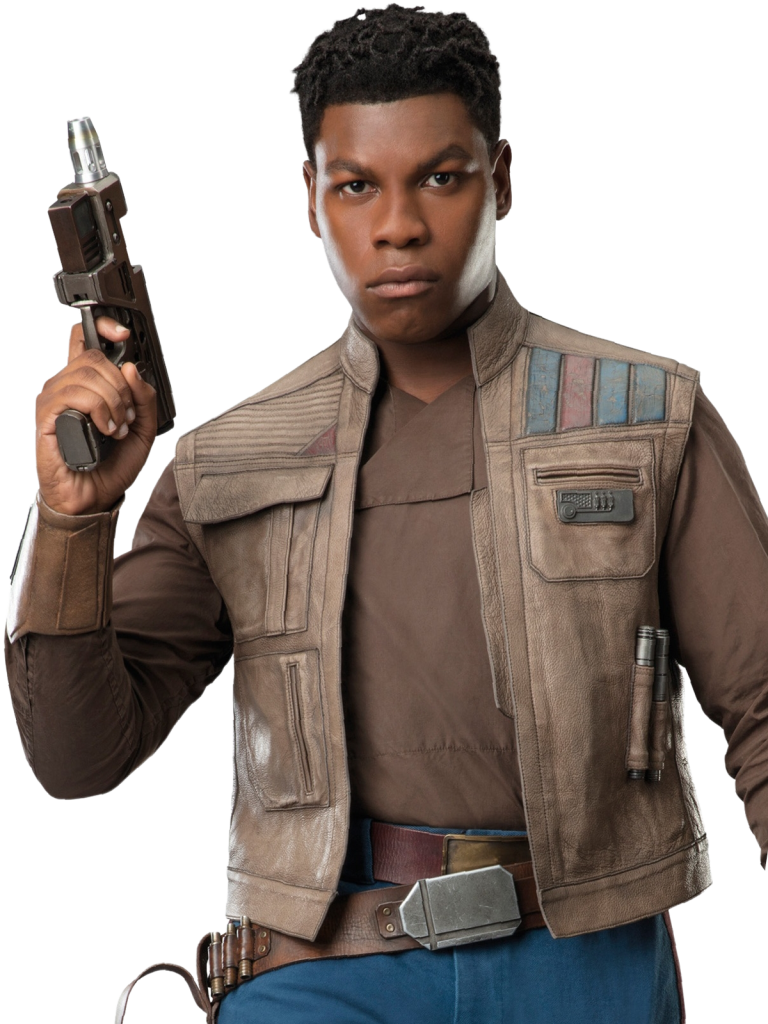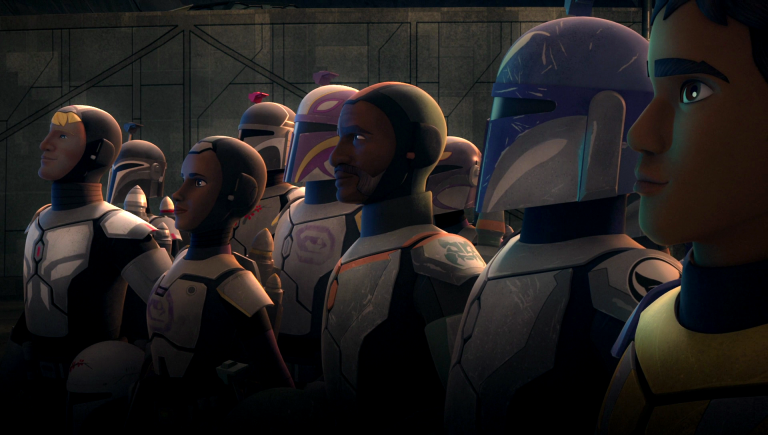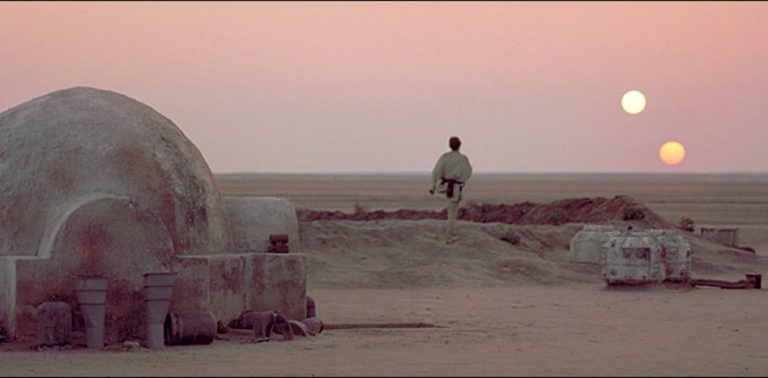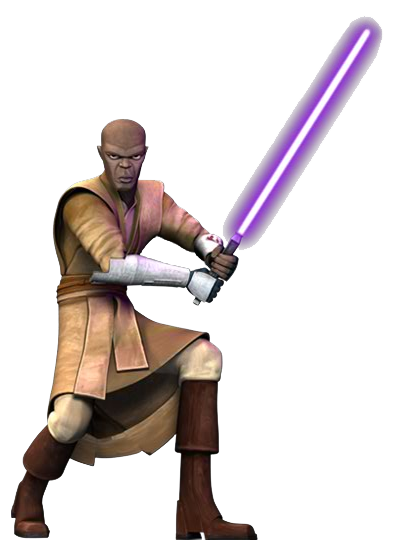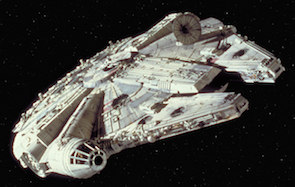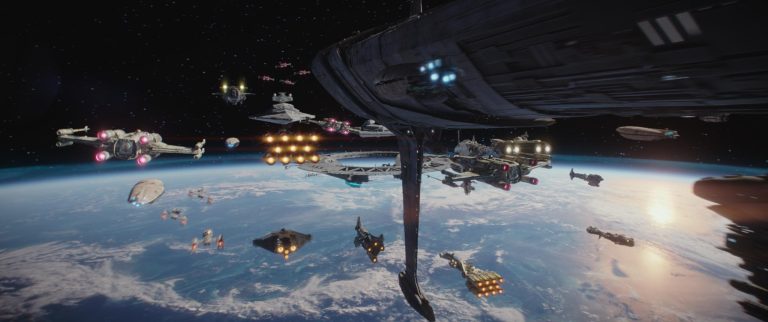How Were The Special Effects In The Original Star Wars Movies Achieved?
Lightsabers, spaceships, and intergalactic battles – the original Star Wars movies captured the imaginations of millions when they first hit the big screen. But have you ever wondered how those jaw-dropping special effects were achieved? In this article, we’ll delve into the behind-the-scenes magic that brought the Star Wars universe to life and explore the ingenious techniques used by the filmmakers to create these iconic visuals.
When George Lucas and his team set out to create the original Star Wars trilogy, they faced a monumental task – bringing an epic space opera to life without the aid of today’s modern computer-generated imagery. Instead, they relied on a combination of practical effects, miniatures, and groundbreaking camera tricks to transport audiences to a galaxy far, far away. The result? A mesmerizing visual spectacle that still captivates audiences to this day.
Using a mix of innovative techniques, the special effects team at Industrial Light & Magic (ILM) crafted a universe filled with stunning visuals. From the use of miniatures and matte paintings to create vast landscapes and breathtaking space battles, to the clever manipulation of cameras and models to simulate realistic movements, every aspect of the effects was meticulously planned and executed. These practical effects not only added a tangible quality to the films but also showcased the incredible craftsmanship and creativity of the talented artists involved.
So, join us as we embark on a journey through the galaxy of special effects in the original Star Wars movies. Discover the secrets behind the lightsabers, witness the birth of iconic creatures, and marvel at the ingenuity that forever changed the landscape of filmmaking. Get ready to be transported to a world where the impossible becomes possible, and the Force is strong with the art of practical effects.
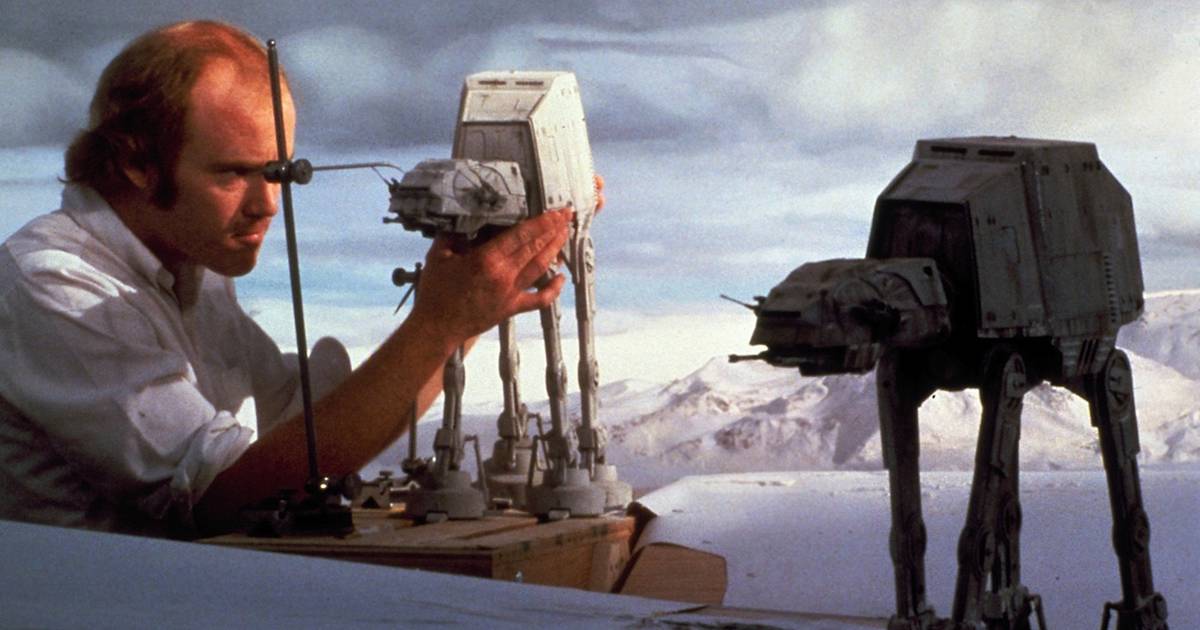
How were the Special Effects in the Original Star Wars Movies Achieved?
The original Star Wars movies revolutionized the film industry with their groundbreaking special effects. Released in the late 1970s and early 1980s, these films showcased a level of visual effects that had never been seen before. From epic space battles to realistic aliens and futuristic technology, the special effects in the original Star Wars movies captivated audiences and set a new standard for the industry. But how were these effects achieved? Let’s delve into the behind-the-scenes magic that brought the galaxy far, far away to life.
The Birth of Industrial Light & Magic
To bring the fantastical world of Star Wars to the big screen, George Lucas founded Industrial Light & Magic (ILM), a special effects company dedicated to pushing the boundaries of visual storytelling. Under the leadership of visual effects pioneer John Dykstra, ILM developed groundbreaking techniques and technologies that would forever change the way movies were made.
ILM’s team of talented artists and engineers employed a combination of practical effects, miniatures, and innovative camera tricks to create the stunning visuals in the original Star Wars movies. They pushed the limits of what was possible at the time, using their creativity and ingenuity to bring Lucas’ vision to life.
Practical Effects: Building the Physical World
One of the key elements in the special effects of the original Star Wars movies was the extensive use of practical effects. ILM’s team constructed intricate models of spaceships, droids, and alien creatures, which were then filmed and composited into the final shots. These physical models added a level of realism and tangibility to the on-screen action, creating a seamless integration between the real and the imaginary.
The spaceships in Star Wars, such as the iconic Millennium Falcon and Star Destroyers, were meticulously built and filmed using motion control techniques. The team used motion control rigs to precisely move the models while filming, creating the illusion of realistic movement in space. This combination of practical models and motion control technology gave the ships a weight and presence that made them feel truly alive.
Miniatures: Creating Epic Scale
Another essential component of the special effects in the original Star Wars movies was the use of miniatures. ILM’s team constructed highly detailed miniature sets and landscapes to portray the vast planets and environments of the Star Wars universe. These miniatures were then filmed using various techniques to create the illusion of grand scale.
To capture the epic space battles, ILM built intricate models of X-Wings, TIE Fighters, and the Death Star. These models were filmed against blue screens, allowing the team to composite them with other elements and create the illusion of a massive battle in space. The attention to detail in these miniatures was extraordinary, with individual ships and structures painstakingly crafted to ensure a realistic and immersive experience for the audience.
The use of miniatures extended beyond space battles. ILM created miniature sets for locations such as the Mos Eisley Cantina and the Death Star’s control room. These sets were meticulously designed and populated with miniature figures to bring the scenes to life. By shooting these miniatures with careful camera angles and lighting, the team achieved a level of realism that made the audience feel as though they were part of the action.
The Power of Optical Effects
In addition to practical effects and miniatures, the original Star Wars movies utilized a wide range of optical effects to enhance the visuals. Optical effects involve manipulating the film itself during the post-production process to create various visual elements. These effects were crucial in bringing the fantastical elements of the Star Wars universe to life.
Matte Paintings: Expanding the Worlds
Matte paintings were a staple of the original Star Wars movies’ visual effects. These were large-scale paintings that depicted landscapes, cityscapes, and other environments. The paintings were then combined with live-action footage to create a seamless blend of real and imaginary elements.
ILM’s artists used innovative techniques to create these matte paintings. They painted on glass panels, using careful brush strokes and perspective techniques to give the illusion of depth and scale. By skillfully combining these paintings with live-action footage, the team expanded the worlds of Star Wars and transported the audience to new and exciting locations.
Optical Compositing: Layering the Shots
Optical compositing was another crucial technique used in the original Star Wars movies. This process involved layering multiple shots together to create complex visuals. By carefully aligning and blending these shots, ILM’s artists were able to seamlessly integrate different elements and create the illusion of a cohesive world.
For example, in the iconic lightsaber battles, multiple shots were combined to create the dynamic duels between Jedi and Sith. The actors’ performances were filmed against a blue screen, and then the lightsaber blades were added in post-production using optical compositing. The result was a visually stunning sequence that captured the imagination of audiences worldwide.
The Legacy of Star Wars Effects
The special effects in the original Star Wars movies laid the foundation for the visual effects industry as we know it today. ILM’s groundbreaking techniques and technologies paved the way for future filmmakers to push the boundaries of what is possible on screen. The combination of practical effects, miniatures, and optical tricks created a level of immersion and realism that captivated audiences and set a new standard for visual storytelling.
Today, the film industry continues to build upon the legacy of the original Star Wars movies. Advancements in computer-generated imagery (CGI) have allowed filmmakers to create even more elaborate and realistic visual effects. However, the practical effects and innovative techniques pioneered by ILM in the original Star Wars movies remain an essential part of the industry’s toolkit.
In conclusion, the special effects in the original Star Wars movies were achieved through a combination of practical effects, miniatures, and optical tricks. ILM’s team of talented artists and engineers pushed the boundaries of what was possible at the time, creating visuals that captivated audiences and set a new standard for the industry. The legacy of these effects continues to influence filmmakers today, reminding us of the power of imagination and innovation in the world of cinema.
Key Takeaways: How were the special effects in the original Star Wars movies achieved?
- The special effects in the original Star Wars movies were achieved through a combination of practical effects and innovative techniques.
- Models and miniatures were used to create realistic spaceships and sets, giving the films a tangible and immersive feel.
- Stop-motion animation was used to bring creatures and droids to life, adding a sense of realism to the fantastical world of Star Wars.
- Optical effects, such as matte paintings and compositing, were employed to create stunning visual landscapes and seamless integration of different elements.
- The use of motion control cameras and computer-controlled rigs allowed for precise camera movements and complex shots, enhancing the cinematic experience.
Frequently Asked Questions
Here are some commonly asked questions about the special effects in the original Star Wars movies:
1. How were the spaceships and spacecrafts created in the Star Wars movies?
In the original Star Wars movies, the spaceships and spacecrafts were created using a combination of practical models and miniatures, as well as visual effects. The models were meticulously crafted by the special effects team, who paid attention to even the smallest details. These models were then filmed using various techniques, such as motion control, to achieve realistic movements.
Additionally, visual effects were used to enhance the models and create the illusion of space. Techniques like blue screen and matte painting were employed to composite the models into the background footage. This combination of practical models and visual effects helped bring the spaceships and spacecrafts to life on screen.
2. How were the lightsaber duels in the Star Wars movies created?
The lightsaber duels in the Star Wars movies were achieved through a combination of choreography, practical effects, and visual effects. The actors involved in the duels would perform the choreographed fight sequences using prop lightsabers, which were later enhanced with visual effects in post-production.
Visual effects were used to add the glowing blades and the distinctive hum sound of the lightsabers. Techniques such as rotoscoping were utilized to create the glowing effect, while sound designers added the iconic lightsaber sounds. The combination of practical choreography and visual effects helped create the intense and memorable lightsaber duels in the Star Wars movies.
3. How were the alien creatures created in the Star Wars movies?
The alien creatures in the Star Wars movies were brought to life through a combination of practical effects and puppetry. The special effects team designed and built intricate creature puppets, which were operated by puppeteers during filming. These puppeteers were skilled in bringing the creatures to life and giving them realistic movements and expressions.
In some cases, animatronics were also used to enhance the movements of the creature puppets. This involved using mechanical components to control certain parts of the puppets, such as the mouth or the eyes. Additionally, visual effects were used to further enhance the creatures’ appearances and interactions with the human actors.
4. How were the space battles in the Star Wars movies achieved?
The space battles in the Star Wars movies were achieved through a combination of practical models, visual effects, and clever camera techniques. The special effects team created detailed models of the spaceships and spacecrafts involved in the battles. These models were then filmed using various techniques, such as motion control, to simulate realistic movements and interactions.
Visual effects were used to enhance the models and create the vastness of space. Techniques like blue screen and matte painting were employed to composite the models into the background footage, while explosions and laser blasts were added in post-production. The combination of practical models, visual effects, and creative camera work helped create the epic space battles that have become iconic in the Star Wars movies.
5. How were the droids and robots created in the Star Wars movies?
The droids and robots in the Star Wars movies were created using a combination of practical effects and puppetry, as well as visual effects. The special effects team designed and built intricate robot puppets, which were operated by puppeteers during filming. These puppeteers brought the robots to life, giving them movements and expressions that added to their believability.
In some cases, animatronics were used to enhance the movements of the robot puppets. This involved using mechanical components to control certain parts of the puppets, such as the arms or the head. Additionally, visual effects were used to further enhance the robots’ appearances and interactions with the human actors. The combination of practical effects, puppetry, and visual effects helped create the memorable droids and robots in the Star Wars movies.
Star Wars 1977’s Visual Effects
Final Summary: The Magic Behind the Original Star Wars Special Effects
In a galaxy far, far away, the original Star Wars movies captivated audiences with their groundbreaking special effects. But how were these mesmerizing visuals achieved? The answer lies in the ingenious use of practical effects, miniatures, and creative camera techniques that brought George Lucas’ vision to life.
One of the key factors behind the success of the original Star Wars special effects was the innovative use of practical effects. Instead of relying solely on computer-generated imagery (CGI), the filmmakers utilized physical models, puppetry, and animatronics to create the fantastical creatures and spaceships that populated the Star Wars universe. This hands-on approach not only added a tangible realism to the visuals but also allowed the actors to interact with their surroundings, enhancing the overall performance and immersion.
Another crucial element was the use of miniatures. The intricate models of spaceships and planets were meticulously crafted with astonishing attention to detail. These miniatures, combined with clever camera work and optical techniques, gave the illusion of grand-scale battles and epic space opera. By manipulating the lighting, motion, and perspective, the filmmakers were able to transport audiences to a galaxy where anything was possible.
In conclusion, the special effects in the original Star Wars movies were achieved through a combination of practical effects, miniatures, and creative camera techniques. These methods not only pushed the boundaries of what was possible at the time but also added a sense of tangibility and immersion to the fantastical world of Star Wars. The magic behind these effects continues to inspire filmmakers to this day, reminding us that sometimes the most extraordinary things are created through ingenuity and imagination. May the Force be with you!

